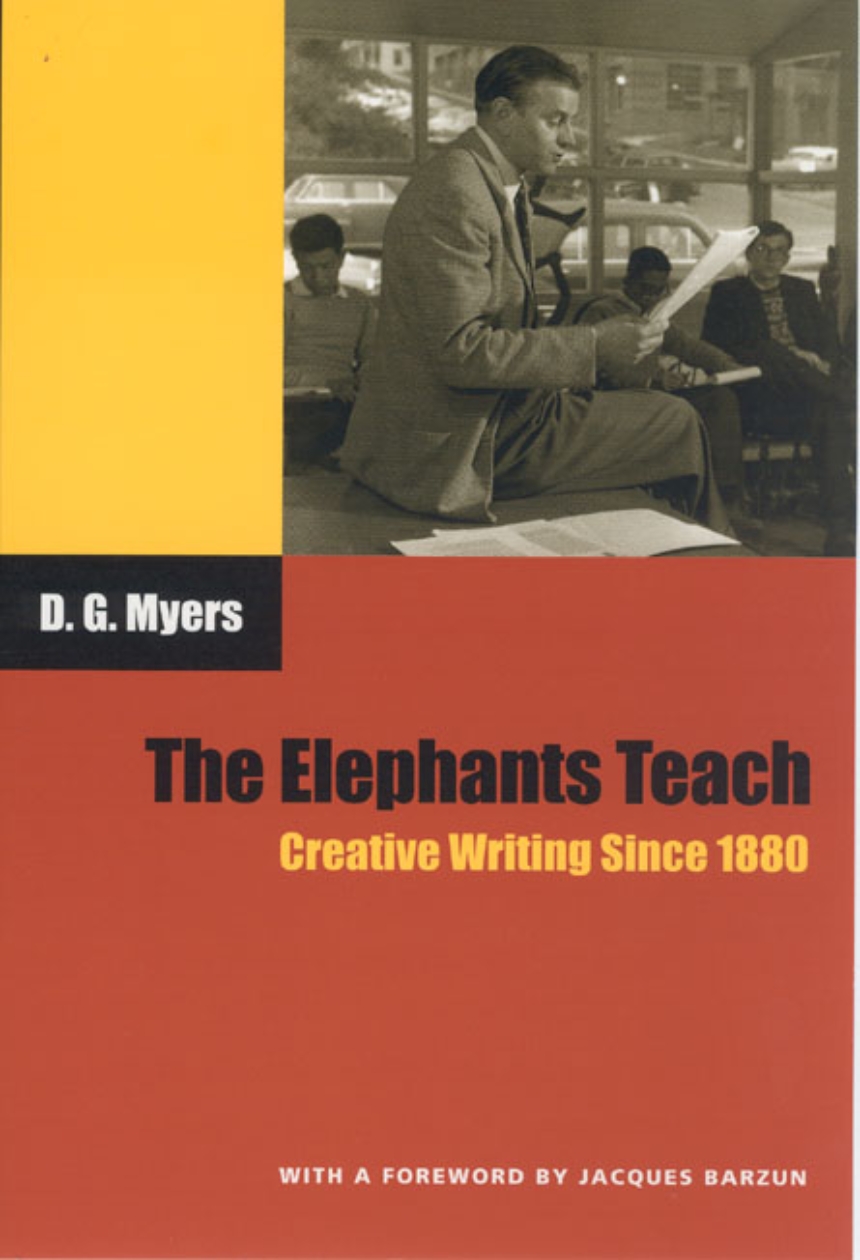The Elephants Teach
Creative Writing Since 1880
When Vladimir Nabokov was up for a chair in literature at Harvard, the linguist Roman Jakobson protested: “What’s next? Shall we appoint elephants to teach zoology?” That anecdote, with which D. G. Myers begins The Elephants Teach, perfectly frames the issues this book tackles.
Myers explores more than a century of debate over how writing should be taught and whether it can or should be taught in a classroom at all. Along the way, he incorporates insights from a host of poets and teachers, including Henry Wadsworth Longfellow, Ralph Waldo Emerson, Robert Frost, John Berryman, John Dewey, Lionel Trilling, Robert Lowell, Ezra Pound, and Saul Bellow. And from his exhaustive research, Myers extracts relevant background information on nineteenth-century educational theory; shifts in technology, publishing, and marketing; the growth of critical theory in this country; and the politics of higher education. While he shows how creative writing has become a machine for creating more creative writing programs, Myers also suggests that its history supplies a precedent for something different—a way for creativity and criticism, poetry and scholarship, to join together to produce not just writing programs but good writers.
Updated with fresh commentary on what’s happened to creative writing in the academy since the first edition was published ten years ago, The Elephants Teach will be indispensable for students and teachers of writing, literature, and literary history.
Myers explores more than a century of debate over how writing should be taught and whether it can or should be taught in a classroom at all. Along the way, he incorporates insights from a host of poets and teachers, including Henry Wadsworth Longfellow, Ralph Waldo Emerson, Robert Frost, John Berryman, John Dewey, Lionel Trilling, Robert Lowell, Ezra Pound, and Saul Bellow. And from his exhaustive research, Myers extracts relevant background information on nineteenth-century educational theory; shifts in technology, publishing, and marketing; the growth of critical theory in this country; and the politics of higher education. While he shows how creative writing has become a machine for creating more creative writing programs, Myers also suggests that its history supplies a precedent for something different—a way for creativity and criticism, poetry and scholarship, to join together to produce not just writing programs but good writers.
Updated with fresh commentary on what’s happened to creative writing in the academy since the first edition was published ten years ago, The Elephants Teach will be indispensable for students and teachers of writing, literature, and literary history.
256 pages | 6 x 9 | © 2006
Education: Curriculum and Methodology, Education--General Studies, History of Education
Literature and Literary Criticism: General Criticism and Critical Theory
Reviews
Table of Contents
About the Author
Foreword by Jacques Barzun
Preface
Introduction
Foreword by Jacques Barzun
Preface
Introduction
1. When Philology Was in Flower
2. The Founding of English Composition
3. The Problem of Writing in a Practical Age
4. An Index of Adagios
5. The Sudden Adoption of Creative Work
6. Criticism Takes Command
7. The Elephant Machine
Afterword
Notes
Bibliography
Index
2. The Founding of English Composition
3. The Problem of Writing in a Practical Age
4. An Index of Adagios
5. The Sudden Adoption of Creative Work
6. Criticism Takes Command
7. The Elephant Machine
Afterword
Notes
Bibliography
Index
